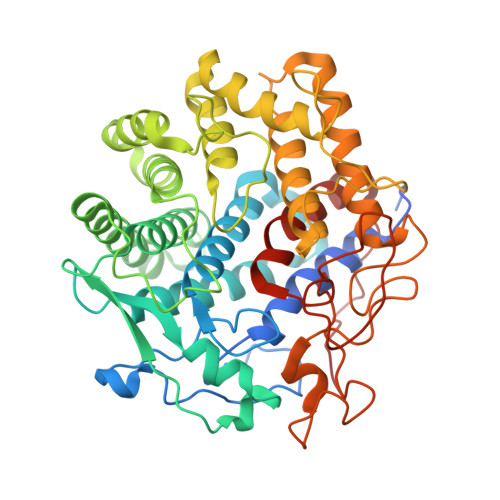Revealing nature's cellulase diversity: the digestion mechanism of Caldicellulosiruptor bescii CelA.
Brunecky, R., Alahuhta, M., Xu, Q., Donohoe, B.S., Crowley, M.F., Kataeva, I.A., Yang, S.J., Resch, M.G., Adams, M.W., Lunin, V.V., Himmel, M.E., Bomble, Y.J.(2013) Science 342: 1513-1516
- PubMed: 24357319
- DOI: https://doi.org/10.1126/science.1244273
- Primary Citation of Related Structures:
4DOD, 4DOE, 4EL8 - PubMed Abstract:
Most fungi and bacteria degrade plant cell walls by secreting free, complementary enzymes that hydrolyze cellulose; however, some bacteria use large enzymatic assemblies called cellulosomes, which recruit complementary enzymes to protein scaffolds. The thermophilic bacterium Caldicellulosiruptor bescii uses an intermediate strategy, secreting many free cellulases that contain multiple catalytic domains. One of these, CelA, comprises a glycoside hydrolase family 9 and a family 48 catalytic domain, as well as three type III cellulose-binding modules. In the saccharification of a common cellulose standard, Avicel, CelA outperforms mixtures of commercially relevant exo- and endoglucanases. From transmission electron microscopy studies of cellulose after incubation with CelA, we report morphological features that suggest that CelA not only exploits the common surface ablation mechanism driven by general cellulase processivity, but also excavates extensive cavities into the surface of the substrate. These results suggest that nature's repertoire of cellulose digestion paradigms remain only partially discovered and understood.
- Biosciences Center, National Renewable Energy Laboratory, 15013 Denver West Parkway, Golden, CO 80401, USA.
Organizational Affiliation:

























